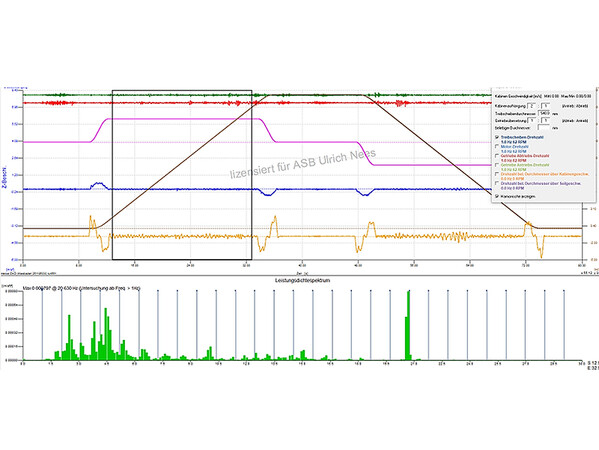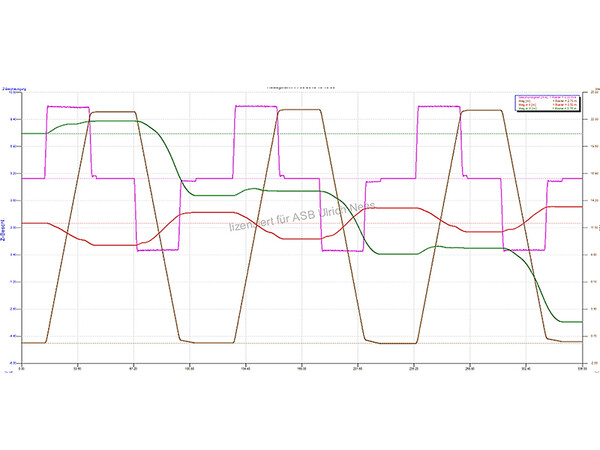Noise insulation in lift construction: ride quality according to ISO 18738
In the last article, we looked at the limits of measurements according to DIN 8989. Below we aim to show the benefits of measurements according to ISO 18738.
By Ulrich Nees and Jan König
Measurements according to ISO 18738 can offer much more than a log of the measurements (ISO ride quality, raw data, power data, etc.) regarding ride quality. Apart from the ride quality mentioned in the title of the standard, the condition of a lift, its components and systems can be analysed and evaluated.
In detail, you can draw conclusions about the design of the lift, assembly quality, interaction of the components and possible mechanical and electric interference effects.
 Measurement of power density spectrum. Photo: © Ulrich Nees / Jan König
Measurement of power density spectrum. Photo: © Ulrich Nees / Jan KönigThis can for example be analysed with measurements according to ISO 18738:
• power data of the lift ride quality (accelerations) of the car and counterweight
• interaction of the components deployed
• influence of the design on ride behaviour
• smooth running of traction sheave and deflection pulleys
• power density spectrum and amplitude spectrum
• vibration analysis to measure acceleration on the drive
• manual filtering to check EMC influences
• comparative measurements between different trips
• ISO ride quality and raw data
• sliding of lifting gear over traction sheave
• divergences of guide rails from perpendicular
• unevenness on the guide rails
• influence of oscillation insulation on travel behaviour
 Divergences of the car across the conveyance height if the oscillation insulation is defective in design. Photo: © Ulrich Nees / Jan König
Divergences of the car across the conveyance height if the oscillation insulation is defective in design. Photo: © Ulrich Nees / Jan KönigBoth diagrams give an initial impression of the possibilities offered by measurements based on ISO 18738. If excessive airborne and structure-borne noise emissions (according to DIN 8989) are measured in rooms deserving protection and transmitted, the ride quality measurement provides important information on the extent to which the lift could be the source of the interference. If the measurements of the ride quality indicate that modifications to the lift are necessary, these can be carried out in a targeted manner.
The measurements and the evaluations based on them provide the lift company/assembly company with important information for optimising possible settings. If these improvements do not lead to the results desired in rooms deserving protection, additional airborne and structure-borne measurements on the lift can provide vital information on the lift and in the lift shaft according to DIN 8989.
Summary: The majority of airborne and structure-borne emissions and their causes can be determined by measurements. Experience shows that a large portion of the defects can be corrected.
Jan König is the owner of the engineering firm (VDI) Ing4Lifts.
Ulrich Nees is the owner of “Aufzug-Systeme + Beratung Ulrich Nees”.
More information: ing4lifts.de
aufzugsystemeberatung.de






















Write a comment